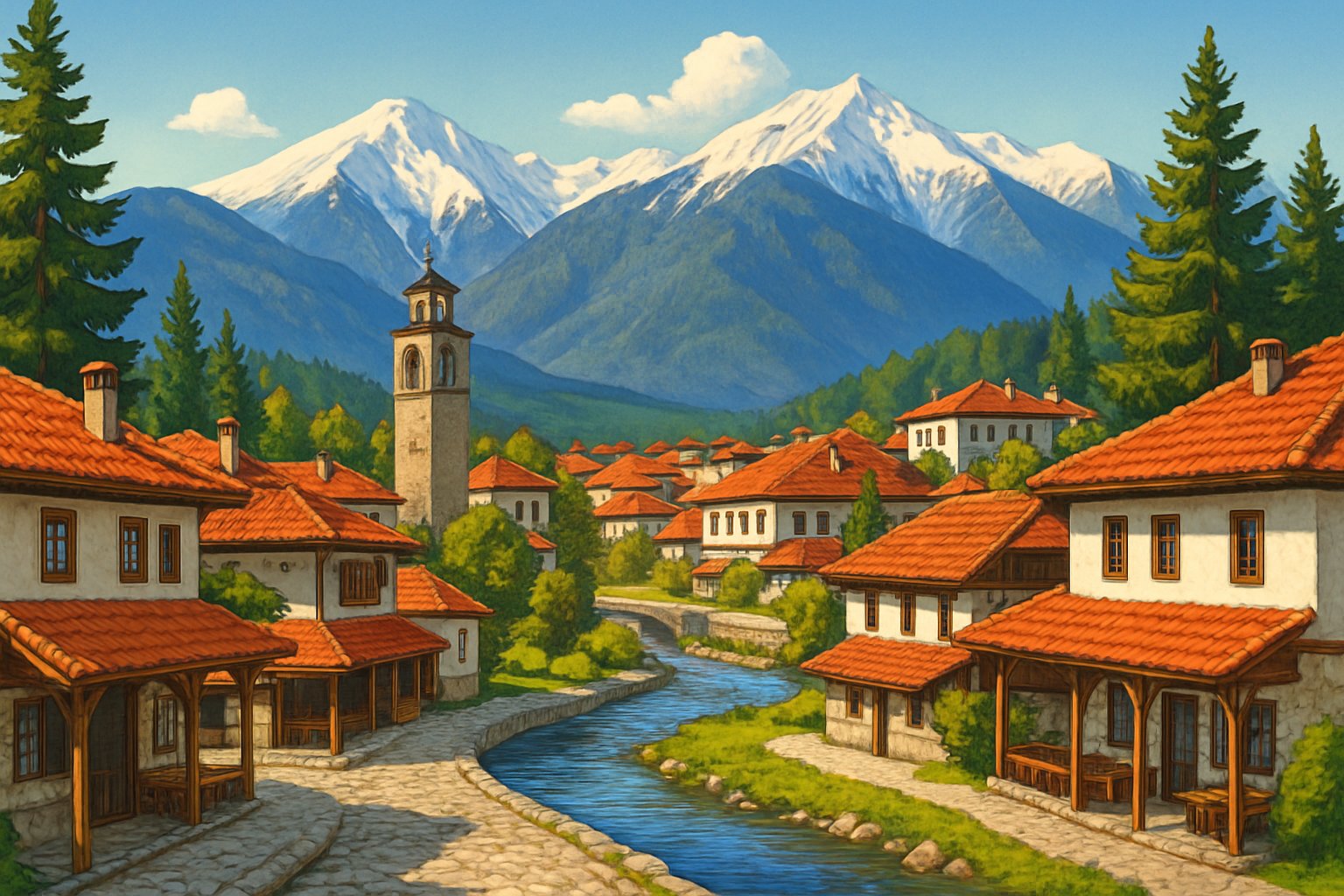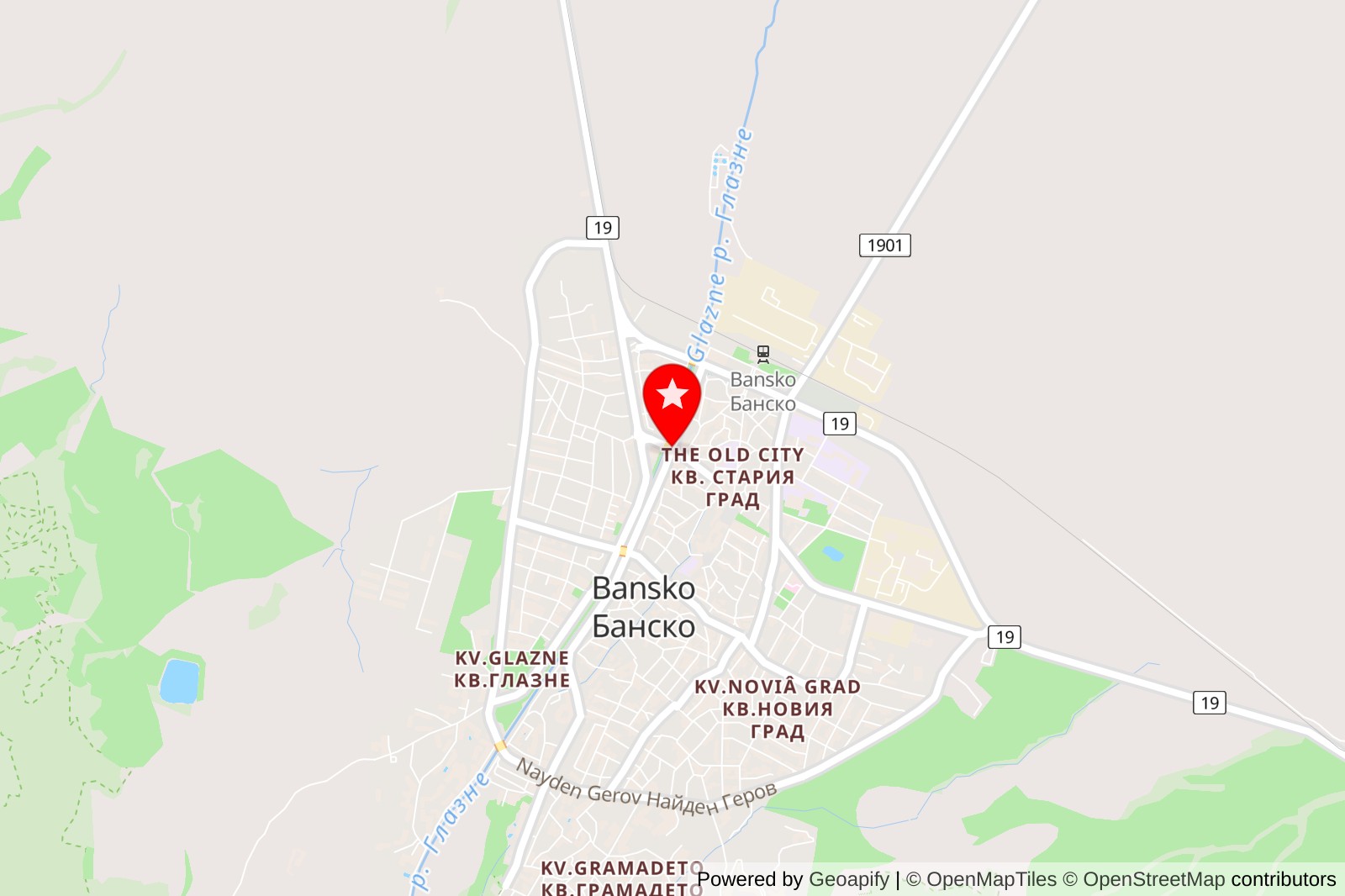Bansko is a mountain town tucked away in southwestern Bulgaria. Once a quiet merchant hub, it’s now one of the country’s most popular spots.
You’ll find Bansko in the Pirin Mountains, not far from Razlog. This small town blends outdoor adventure, deep history, and modern comforts in a way that’s hard not to love.

Let’s dive into what makes Bansko worth a visit, from its cultural roots to travel tips that might actually help. Whether you’re itching for ski slopes and winter sports or just want to try year-round activities, Bansko’s become a must-see for travelers from all over.
1) Bansko
Bansko sits at 2,770 meters above sea level in Bulgaria. It’s nestled right in the heart of the Pirin Mountains.
When you walk its streets, the town’s history and culture feel pretty vivid. The Tourist Information Center hosts exhibitions all year—during my visit, I stumbled into a children’s charity art show and a local crafts display.
Bansko works as both a winter ski spot and a summer mountain getaway. Somehow, it keeps its traditional Bulgarian character while still offering modern stuff for visitors.
Locals here seem genuinely proud of their heritage and are usually happy to welcome travelers. The town’s spot in the Pirin Mountains makes it ideal for exploring the outdoors.
You can ski in winter or hike and bike in the warmer months. There’s always something going on.
Location: 2770, Bulgaria
Website: Visit Website
History and Culture of Bansko
Bansko stands out as one of Bulgaria’s most culturally rich towns. Here, old traditions mix with lively festivals and some seriously good food.
The town’s deep cultural roots have shaped Bulgarian values and left marks on the country’s history.
Traditional Festivals
Bansko’s living culture really comes alive through its festivals. There’s a mix of religious and folk events, some going back centuries.
The Bansko Jazz Festival draws musicians from all over every summer. For a week, the historic center turns into a buzzing music venue.
Folk festivals pop up during big holidays. Locals dress up in traditional outfits and perform dances that have been passed down forever.
The Koleduvane Christmas tradition is still going strong. Groups of carolers wander from house to house, singing old songs and bringing blessings.
Wine harvest festivals in autumn are a big deal. Families open their cellars, and you get to taste homemade wine and local food.
Historic Landmarks
Bansko’s streets are lined with 130 architectural-historic monuments, and seven have national significance. These buildings tell stories from the town’s merchant past.
The Holy Trinity Church is a highlight, with its 19th-century architecture and stunning wood-carved iconostasis. Inside, the frescoes are genuinely impressive.
The Velyanova House is now a museum. Step inside and you’ll see how wealthy merchants lived in the 1800s.
The Neofit Rilski House Museum honors a famous local educator. He wrote Bulgaria’s first grammar book and played a huge role in shaping modern education.
Stone bridges and fountains are scattered around the old town. They once served merchant caravans passing through Bansko.
Local Cuisine and Wine
Bansko’s mountain setting gives its food a special twist. The restaurants mix Bulgarian classics with regional specialties.
Bansko-style kapama is the star dish—a rich stew with layers of meats, sauerkraut, and rice. It’s perfect after a cold day.
Local wines from nearby vineyards are surprisingly good. The Melnik grape does especially well in this climate.
Traditional mehana taverns serve up old-school recipes. Most use local ingredients and keep things simple but tasty.
You’ll spot Shopska salad and kavarma on almost every menu. The fresh mountain herbs and veggies make them pop.
Bakeries churn out banitsa every morning. This flaky pastry with cheese is a must-try for breakfast.
Getting Around Bansko
Bansko’s pretty compact, so you can walk to most places. If you need to go farther, local buses and taxis are easy to find.
Transportation Options
Walking works best for getting around the town center. Most restaurants, shops, and sights are within a quick 10-minute stroll.
The old town is pedestrian-friendly, so you can wander between historic spots, cafes, and hotels without dodging cars.
Local buses run between different parts of Bansko. They’re especially handy during ski season and summer, with tickets costing just 1-2 lev.
The main bus route connects the center to the ski lift area. That’s a lifesaver if you’re lugging ski gear or just not in the mood for an uphill walk.
Taxis are everywhere. You’ll spot them in the main square or you can call ahead. Most rides in town cost about 5-10 lev.
Drivers usually know enough English to get by, at least when tourists are around. It’s smart to agree on a price before you hop in.
Tips for Navigating the Town
Download offline maps before heading out. Cell service can get patchy in the mountains.
The town layout is straightforward. The main pedestrian street runs through the center, with most businesses right along it.
Wear comfortable shoes—the cobblestone streets in the old town can be uneven and a bit slick if it’s wet.
Tourist areas have street signs in both Bulgarian and English. Finding major landmarks isn’t a hassle.
Don’t be shy about asking locals for directions. Most people working in hotels or restaurants speak enough English and are happy to help.
Frequently Asked Questions

Here’s a quick Q&A for planning your Bansko trip. I’ve covered everything from where to stay and what to do in summer, to ski packages and budget tips.
What are the top hotels to stay at in Bansko?
If you’re visiting for the winter, look for hotels near the ski lifts. The Kempinski Grand Arena and Hotel Strazhite both offer luxury stays with spas.
On a budget? Family-run guesthouses in the old town are a great pick. You get genuine Bulgarian hospitality and cool old architecture.
Digital nomads often go for apart-hotels. These have kitchenettes and workspaces, which is handy if you’re sticking around for a while.
What activities can you enjoy in Bansko during the non-winter months?
Hiking in the Pirin Mountains is a highlight in summer and fall. Trails range from easy to tough, and the views are unreal.
Mountain biking takes over the ski slopes when the snow melts. Local shops rent bikes and hand out trail maps.
The Bansko Jazz Festival in August is worth planning around. International musicians fill the main square with music for days.
How can I find the most suitable skiing packages for Bansko?
Book through local tour operators for the best deals. They usually bundle lift passes, equipment rental, and lessons.
Booking early (think October) often means big discounts for January and February trips. It pays to plan ahead.
Look for packages that cover accommodation, meals, and ski services. Many hotels team up with ski schools for all-in-one deals.
Can you provide tips for first-time skiers visiting Bansko?
Always book lessons with certified instructors. Bansko’s ski resort is one of the most modern in the Balkans, and it’s great for beginners.
Rent your gear at first. That way you can try different stuff before buying your own.
Stay close to the gondola base station if you can. It’s just easier to get back and forth, especially when you’re tired.
What are the must-see attractions in Bansko for tourists?
Don’t miss the Holy Trinity Church in the old town. The icons and architecture from the 1800s are beautiful.
The Nikola Vaptsarov House Museum is another good stop. It gives you a glimpse into mountain life and local history.
Honestly, just walking the cobblestone streets and popping into traditional mehanas for food and wine is half the fun.
How does the cost of a trip to Bansko compare to other ski resorts in Europe?
Bansko’s way easier on the wallet than places like Switzerland or Austria. Accommodation and dining usually run 40-60% cheaper.
Lift tickets here? They’re a bargain. You can ski all week in Bansko for what you’d pay for just a couple of days at a big-name Swiss or French resort.
Food and drinks stand out the most. Local spots serve up filling meals for less than what a starter costs in Western Europe.

